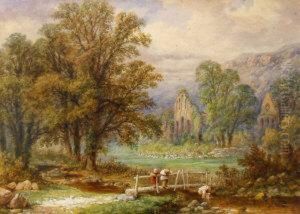S.W. Baker Paintings
Sir Samuel White Baker was not primarily known as a traditional artist, but rather as a British explorer, officer, naturalist, big game hunter, engineer, writer, and abolitionist. Born on June 8, 1821, in London, England, Baker carved a name for himself through his explorations within the Nile region of Africa and his efforts in the suppression of the slave trade in Sudan.
Baker's exploits were not in the realm of painting or sculpture, but his adventures were artfully narrated in several written works, which continue to captivate readers with the vivid description of his journey through uncharted territories. His most famous expedition was the discovery of Lake Albert, one of the great African lakes, and he named it after Prince Albert, the husband of Queen Victoria. His exploration efforts were aimed at establishing the sources of the Nile, a quest that was central to Victorian-era exploration narratives.
In addition to his exploration feats, Baker also undertook administrative tasks. In 1869, he was appointed by the Khedive of Egypt to lead a military expedition to central Africa, with the purpose of establishing Egyptian authority and suppressing the slave trade along the upper Nile. His campaign, though only partially successful, was a significant step in the efforts to end the slave trade in that region.
Throughout his life, Baker authored several books about his travels and experiences, including 'The Albert N'yanza, Great Basin of the Nile' (1866), and 'The Nile Tributaries of Abyssinia' (1867), which not only added to the geographical knowledge of the time but also served as inspiration for both adventurers and abolitionists. His written works, in a sense, were his artistic legacy, conveying the spirit of the age of exploration and the fight against the inhumanity of slavery.
Sir Samuel White Baker's life was filled with the kind of adventures that most people only dream of, and while he may not fit the traditional mold of an artist, his legacy is etched in the annals of exploration history. He passed away on December 30, 1893, in Sandford Orleigh, Newton Abbot, Devon, England, leaving behind a legacy of courage, discovery, and a pursuit of a better world.
